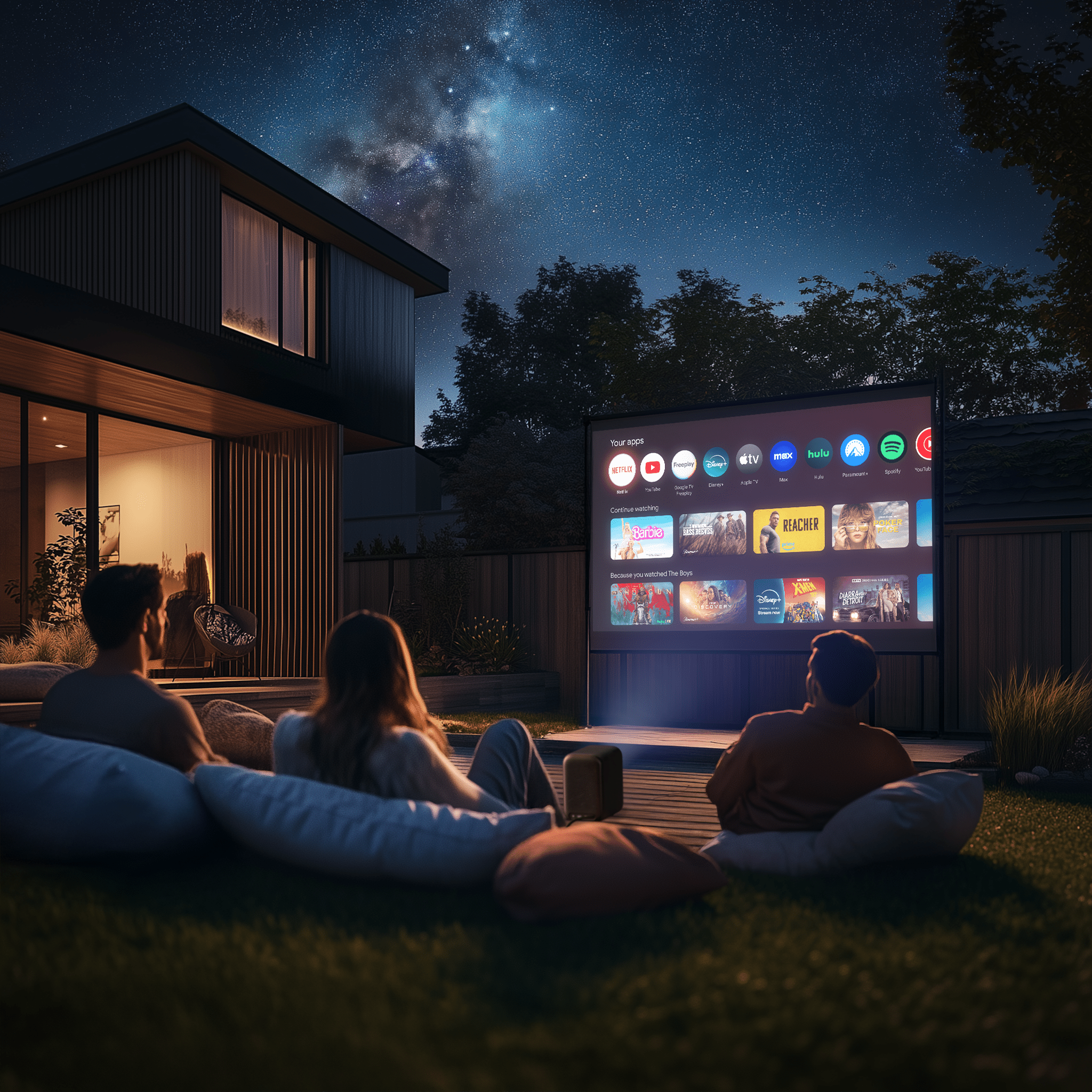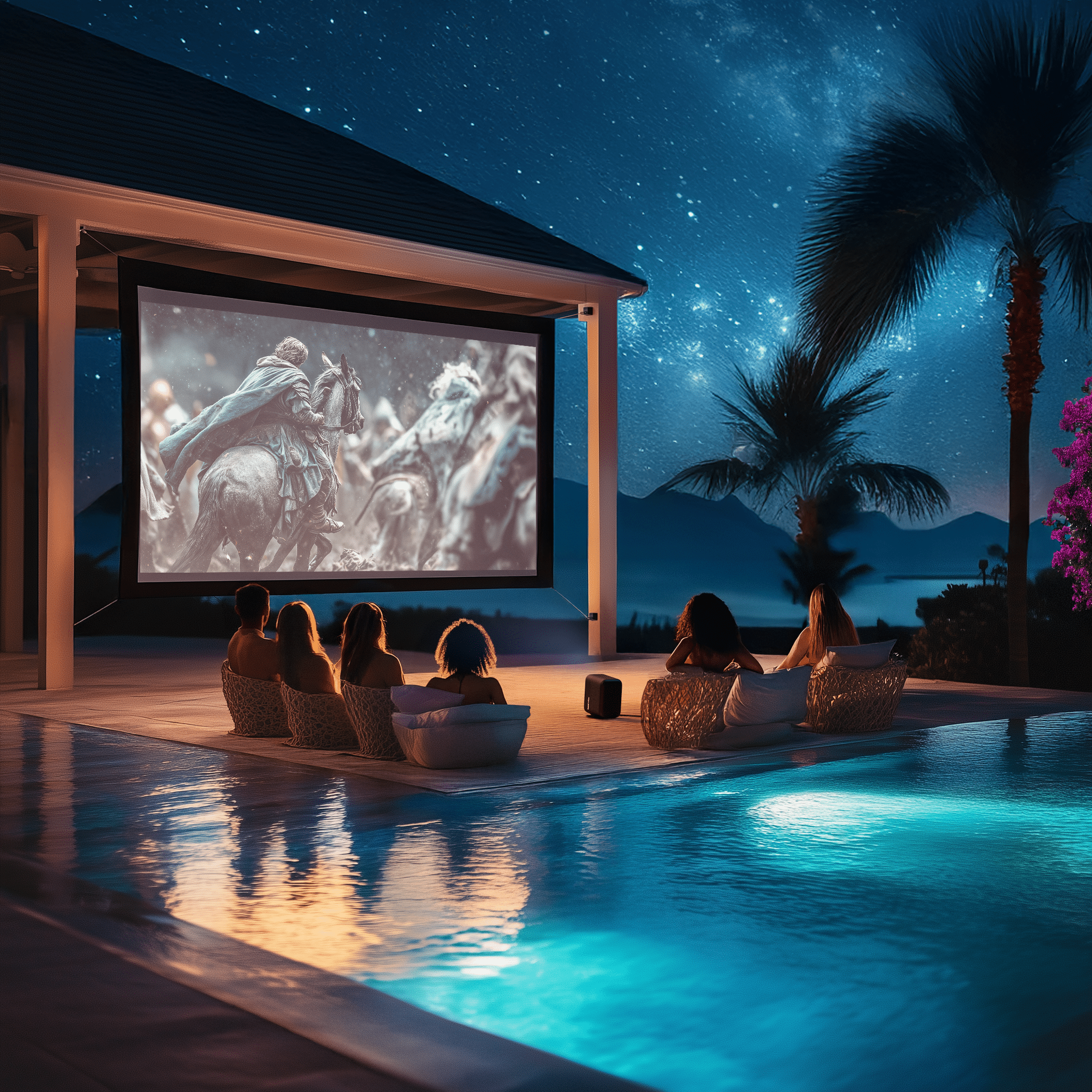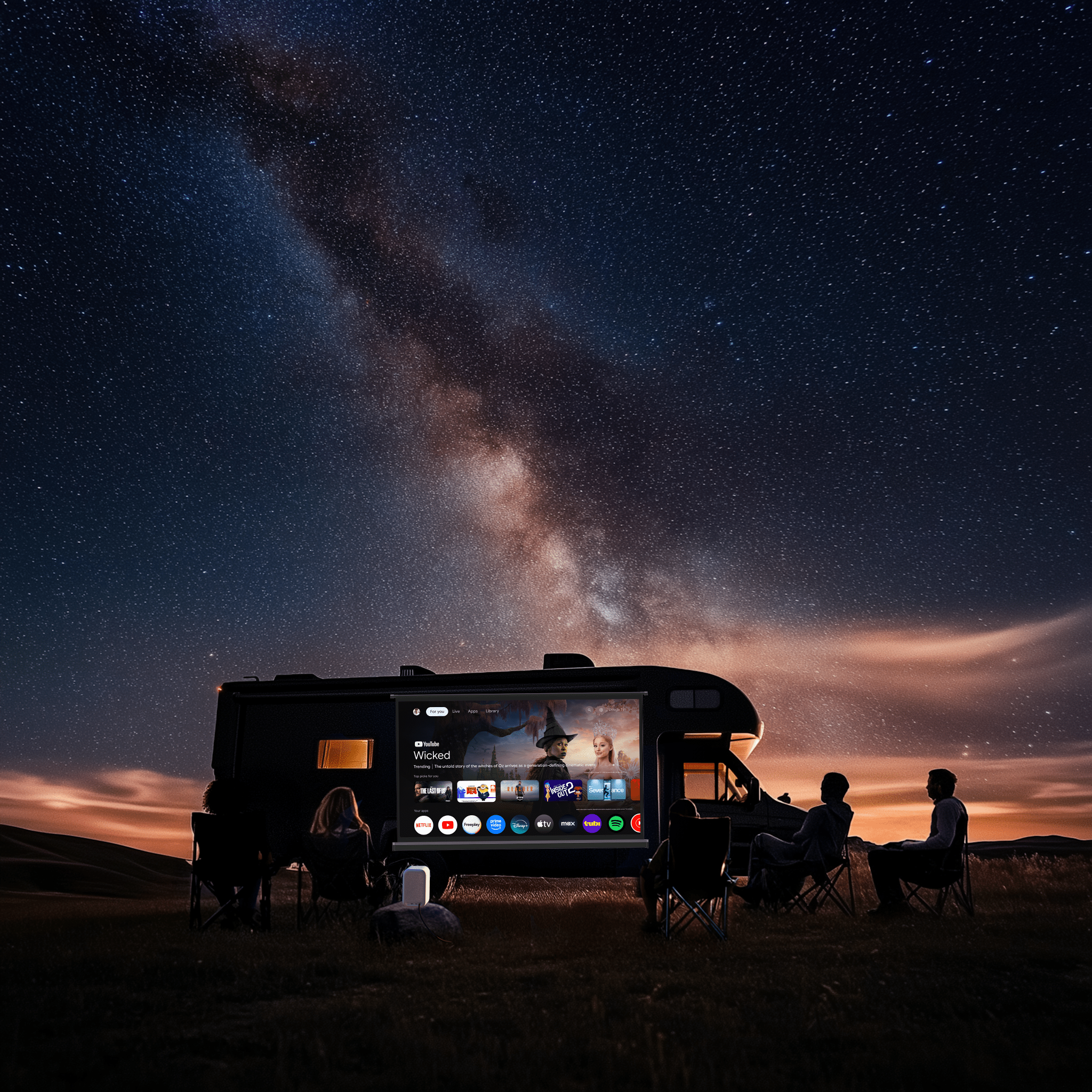When shopping for a projector, one of the most important specifications to consider is the throw ratio (we know, we know, we keep saying this, but it all matters when it comes to getting you a projector that suits your needs). This often-overlooked number plays a critical role in determining how large your projected image will be based on the distance between the projector and the screen.
Understanding the throw ratio can help you select the perfect projector for your space, whether it's to be used as a small home theater, within a conference room, or relaxing by the campfire.

What is throw ratio?
Throw ratio is the relationship between the distance from the projector to the screen (throw distance) and the width of the projected image.
For example, if a projector has a throw ratio of 2.0:1, it means that for every 2 feet of distance, the image width will be 1 foot. So, if you place the projector 10 feet away, the image width will be 5 feet.
Types of Throw Ratios
Projectors are typically classified into different categories based on their throw ratios:
1. Ultra Short Throw (UST) Projectors – <0.4:1 Ultra short throw projectors can create a large image from just a few inches away from the screen. These projectors are ideal for small spaces, interactive whiteboards, and home theater setups where you don’t want the projector to be mounted far away.
2. Short Throw Projectors – 0.4:1 to 1.0:1 Short throw projectors require slightly more distance than ultra short throw models but can still create a large image in a limited space. They are commonly used in classrooms, offices, and gaming setups to reduce shadows and glare.
3. Standard Throw Projectors – 1.5:1 to 2.5:1 Most business and home theater projectors fall into this category. They require a moderate amount of space to project a large image and are best suited for medium-sized rooms.
4. Long Throw Projectors – >2.5:1 Long throw projectors are designed for large venues such as auditoriums, conference halls, and stadiums. They need to be placed farther away to produce the desired image size without distortion.
How to Choose the Right Throw Ratio for Your Space
To determine the ideal throw ratio for your setup, consider the following:
Room Size: Measure the distance available for projector placement.
Screen Size: Decide how large you want the projected image to be.
Mounting Preferences: If space is limited, a short or ultra short throw projector might be the best option.
Most projectors come with a fixed throw ratio, but some offer zoom lenses or interchangeable lenses to adjust the image size without moving the projector. Lumi Max has a throw ratio of 1.25:1, meaning the image size increases as the distance from the screen increases.
Understanding throw ratio is crucial when choosing a projector that fits your space and needs. Whether you're setting up a home theater, office presentation area, or the big screen while under the stars on a camping trip, selecting the right throw ratio ensures the best possible image quality and viewing experience. By calculating the proper throw distance, you can make an informed decision and get the most out of your projector setup.




Share:
How to Choose the Best Smart Projector for Your Lifestyle
What is Autofocus?